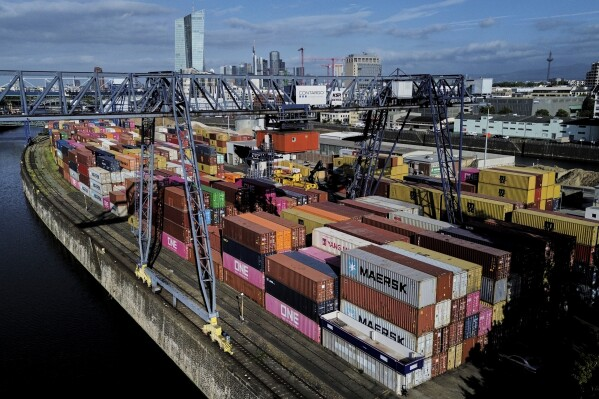Euro Area and EU Trade Surpluses Shrink Sharply in June 2025
- Flexi Group
- Aug 25
- 3 min read
The euro area recorded a trade surplus of €7.0 billion in goods with the rest of the world in June 2025, a steep decline from the €20.7 billion surplus registered in the same month last year, according to new data published by Eurostat. Exports of goods from the euro area to countries outside the bloc reached €237.2 billion in June 2025, a slight increase of 0.4 per cent compared with €236.3 billion in June 2024. Imports, however, rose much more sharply, climbing to €230.2 billion, up 6.8 per cent from €215.6 billion a year earlier.

On a month-to-month basis, the euro area’s surplus also narrowed considerably, falling from €16.5 billion in May 2025 to €7.0 billion in June. This contraction was largely due to a weaker balance in chemicals and related products, which slipped from €24.4 billion in May to €15.1 billion in June. Compared with June of last year, the euro area balance contracted by €13.7 billion, with the surplus in chemicals and related products shrinking from €20.6 billion to €15.1 billion. Surpluses in machinery and vehicles also decreased, falling from €17.4 billion to €13.6 billion, while other manufactured goods moved from a surplus of €2.4 billion to a deficit of €0.4 billion.
Between January and June 2025, the euro area posted a trade surplus of €93.3 billion, lower than the €102.0 billion recorded in the same period of 2024. Exports of goods during the first half of 2025 increased to €1 485.8 billion, representing a 3.9 per cent rise compared with the same period in 2024. Imports, however, grew at a faster pace, reaching €1 392.5 billion, a 4.9 per cent increase year-on-year. Intra-euro area trade during the same period amounted to €1 319.5 billion, up 1.3 per cent from January to June 2024.
For the European Union as a whole, the trade surplus with the rest of the world also fell significantly, reaching €8.0 billion in June 2025 compared with €20.3 billion a year earlier. Extra-EU exports of goods in June stood at €213.7 billion, unchanged from the previous year, while imports grew to €205.7 billion, a 6.4 per cent rise from €193.4 billion in June 2024. On a monthly basis, the EU surplus dropped from €13.0 billion in May 2025 to €8.0 billion in June. This downturn was driven mainly by a sharp decrease in the chemicals surplus, which fell from €23.2 billion to €14.3 billion. Offsetting this decline to some extent, the energy deficit narrowed from –€25.2 billion to –€23.4 billion, and the machinery and vehicles surplus rose from €15.0 billion to €16.4 billion.
Compared with June 2024, the EU surplus contracted by €12.3 billion, reflecting smaller surpluses in key product categories. The machinery and vehicles surplus dropped from €21.3 billion to €16.4 billion, chemicals and related products decreased from €19.1 billion to €14.3 billion, and other manufactured goods shifted from a €1.9 billion surplus to a deficit of €1.4 billion. These losses were partly offset by the reduced energy deficit, which improved from –€26.5 billion to –€23.4 billion.
In the first half of 2025, the EU recorded a surplus of €80.1 billion, down from €92.9 billion between January and June 2024. Extra-EU exports over the period climbed to €1 341.1 billion, a 4.4 per cent increase, while imports rose to €1 261.0 billion, up 5.8 per cent compared with the same six months of last year. Intra-EU trade reached €2 071.0 billion in January to June 2025, a 1.4 per cent gain compared with the same timeframe in 2024.
Seasonally adjusted data confirmed further weakness in June. Euro area exports fell by 2.4 per cent compared with May 2025, while imports increased by 3.1 per cent. The seasonally adjusted euro area trade balance slipped to €2.8 billion from €15.6 billion in the previous month. In the wider EU, seasonally adjusted exports decreased by 2.3 per cent in June compared with May, while imports rose by 2.9 per cent. The seasonally adjusted EU balance fell to €1.8 billion from €12.7 billion in May.
Looking at quarterly figures, euro area exports and imports to countries outside the euro area both weakened in the second quarter of 2025 compared with the first. Exports declined by 5.9 per cent and imports dropped by 2.4 per cent. Intra-euro area trade fell slightly by 0.3 per cent. For the EU, exports to non-EU countries were down 7.1 per cent in the second quarter compared with the first, while imports fell by 3.4 per cent. Intra-EU trade remained stable over the same period.
By fLEXI tEAM
.png)
.png)







Comments